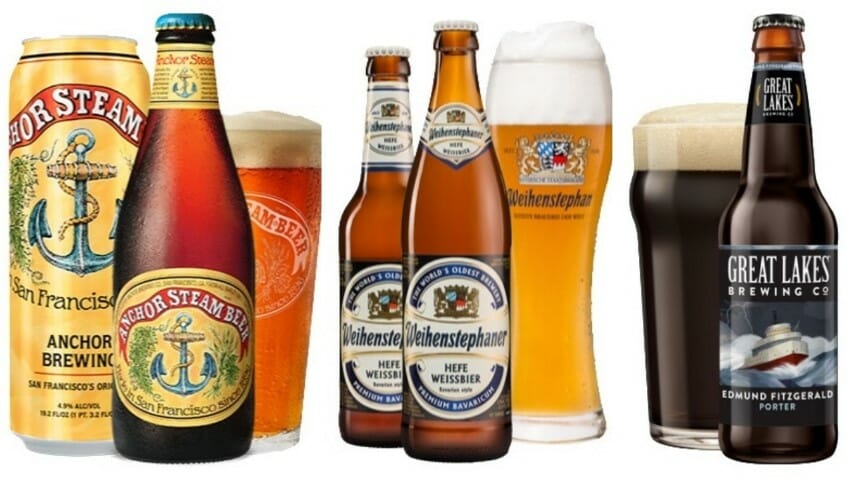
It’s a truism of essentially every geeky hobby that the more deeply one becomes involved, the more difficult it becomes to remember or perceive what that topic is like to tackle for relative newcomers. Or in other words: We tend to forget what it was like to be an outsider, looking in at our weird hobbies.
The craft beer world is certainly no different, although some of us who have been memorizing style details or homebrewing recipes for more than a decade may often forget it. When we look at the beer world, we see an incredible array of styles; some subtly different from one another and some that are so incredibly distinct that it’s a wonder we can refer to all of it as “beer.” When you’ve been exploring the beer world for a long time, you get a feel for the incredible diversity of what that word entails.
As a newcomer, though? Well, especially in the modern beer world, I wouldn’t be surprised if someone who is just sampling the craft industry for the first time makes the assumption that practically all beer is India pale ale, or at the very least defined by hop flavors. We are, after all, living through an age where the craft industry is almost completely defined by IPA, and hazy IPA in particular, as breweries throw more and more of their weight and resources behind one of the few areas of the industry that is still growing as overall craft beer growth slows. IPA is essentially the mascot of craft beer itself, and it disproportionately fixes the audience’s mind on hops as the most important part of the brewing process, even if few brewers would agree.
As a result, new drinkers likely get the impression that they’re supposed to like IPA, even if the style doesn’t necessarily appeal to them—especially at first. It was, after all, once a style where a strong level of bitterness was expected to make it something of an acquired taste—the kind of beer you might warm up to after first growing accustomed to more balanced and approachable styles. Over time, however, as IPA became more sweet, fruit-forward and “juicy” it has increasingly become positioned as a “first beer” choice for people curious about venturing beyond macro lager.
And for a lot of people, that’s fine. Many drinkers have come to craft beer for the first time via hazy IPA in the last five years, after all. But there are other drinkers out there to be courted as well—some who simply don’t enjoy hop flavors, at least as they’ve experienced them to date. And there’s nothing wrong with that. In fact, we should be more aware of these hop-averse drinkers, so we’re better able to suggest the myriad of other styles and beers that might appeal to them. It would be a shame if these drinkers simply concluded that beer wasn’t for them, just because they don’t enjoy DDH haze bomb IPAs.
And so, drawing inspiration from beer writer Kate Bernot, who asked this very question last fall in a piece I mentally filed away to revisit at a later date, I set out to make a 10-item list of excellent, widely available beers that you should definitely try if you’re someone who simply doesn’t enjoy hops. Who knows? One of these might become your new favorite beer in short order.
I’ve tried to include a wide variety of approachable styles, from a few different U.S. brewing regions, and will also toss in some alternatives that one might seek out if these beers aren’t available where you live.
1. Weihenstephaner Hefeweissbier
Alternatives: Sierra Nevada Kellerweiss, Boulevard Unfiltered Wheat
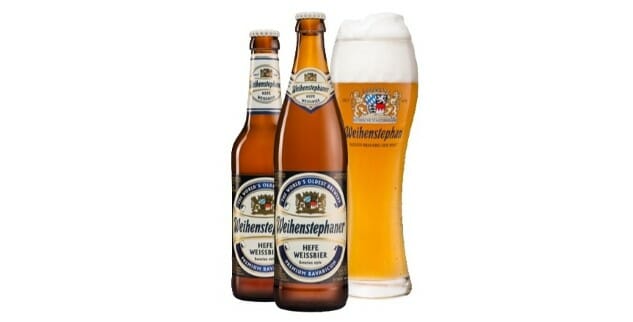
Weihenstephaner is the definitive German-style hefeweizen, which means it’s an unfiltered wheat ale with a good amount of yeast still in suspension, which helps contribute to its uniquely fruity and spicy flavor profile. This tends to be the benchmark against which so many other hefeweizens (both German and American-style) are judged, and it’s readily available all over the U.S. This particular beer is so strongly associated with the brewery, in fact, that most people hear “Weihenstephaner” and immediately assume you’re talking about the hefeweizen.
Expect prominent fruity notes of banana, which play very well with the doughy, bready wheat malt backbone of this ale, embellished with notes of vanilla, lemon, clove and peppercorn spiciness. An excellent hot-weather beer, it’s also very food friendly—I love a hefeweizen alongside fish and chips or fish tacos in particular. Unchanging and reliable, this beer is one of the surest bets you’ll ever encounter.
2. Anchor Brewing Co. Steam Beer
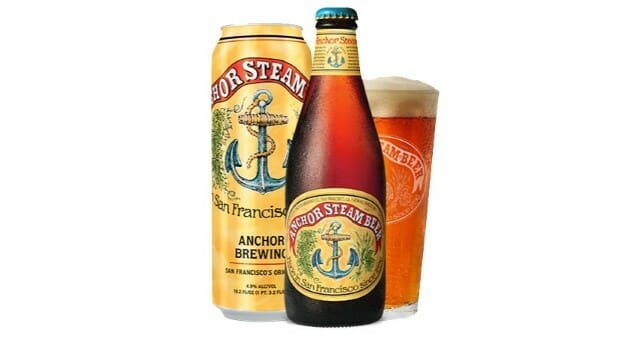
I won’t bother with an “alternative” here, because there’s really only one Anchor Steam, despite a smattering of other steam beer/California commons you may be able to locate. One of the most important beers in the history of early American brewing, Anchor Steam is its own beast, a descendent of the earliest beer brewing techniques that grew out of German settlers bringing lager beer to the warm and balmy California shore. It’s a beer that anyone who’s been in the field for more than a decade should know quite well, but may perhaps not be as well known to the newer generation.
Anchor Steam is essentially a lightly malty, crisp lager-ale hybrid that is gentle and easygoing on the palate, with a slight degree of hoppiness but nothing to write home about. Certainly, this beer is not “hoppy” in the way that most beginning beer drinkers will have experienced “hoppy” in 2020. Expect lightly malty and toasty flavors, with a slightly fruity accent, and very subtle hints of pine/grass and bitterness on the palate. If you want to dip a tiny toe into something that is more bitter than your Bud Light, this would be a good place to do it.
3. Big Sky Brewing Co. Moose Drool Brown Ale
Alternatives: Rogue Hazelnut Brown Ale, Bell’s Best Brown, Samuel Smith’s Nut Brown Ale
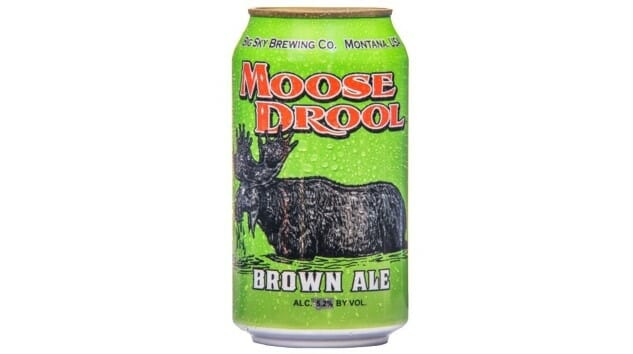
I lumped praise on a lot of different beers during my month-long series on craft beer flagships in February, but the entry on Moose Drool Brown Ale is arguably one of the most loving, just because this particular style feels like such a tonic right now to the hyperbolic way we approach so many modern beer styles. In my mind, this is basically the definitive “American brown ale,” a style that was once a ubiquitous brewpub staple, but can now be hard to locate. Hailing from Montana, it’s a beautifully balanced, with mildly nutty, cocoa-y, bready notes and a wonderfully subtle sweetness that is considerably more satisfying to me than the sugar bombs to which we’ve now become accustomed. As I wrote in February:
In the course of this Flagship February series, I’ve revisited some beers that were pleasant, and some that seemed to have been left behind a bit by the development of the beer scene, but Moose Drool is perhaps the first time I find myself saying “I wish that beer like this was more common today.” Brown ale is a minor niche, to be certain, but the particular space that Moose Drool carves out between porter and lighter ales is ground we used to explore far more often, and now have a tendency to collectively overlook. It’s a reminder: There are realms of flavor out there being underutilized in the beer scene, and sometimes all it takes is revisiting a classic to make you pine for what was once easy to come by.
4. Allagash White
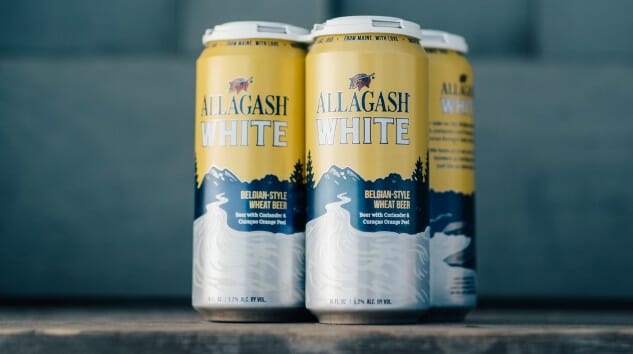
Nobody’s going to argue this one. As I wrote in the same Flagship February series I referenced above, Allagash White may well be the single most widely beloved of all the major craft beer regional/national flagships, and it’s practically the style-definer as far as American-made Belgian witbiers are concerned. If you don’t know Belgian witbier: It’s like if you took the German hefeweizen formula described above with Weihenstephaner Hefeweissbeer, and added a few new dimensions of citrus and spice. In the case of White, those notes lean toward light orange and a wonderfully peppery spice profile.
It’s a beer that sits at the happy medium between simplicity and complexity. It’s effortlessly easy to drink, but begs deeper contemplation. It’s converted god only knows how many drinkers to Belgian-style beers over the years, and it might well do the same for you. If you think craft beer is nothing more than IPA, go pick up some Allagash White immediately and get ready to expand your horizons. And it’s even in cans now!
5. Great Lakes Brewing Co. Edmund Fitzgerald
Alternatives: Bell’s Porter, Founders Porter, Deschutes Black Butte, Anchor Porter, Sierra Nevada Porter
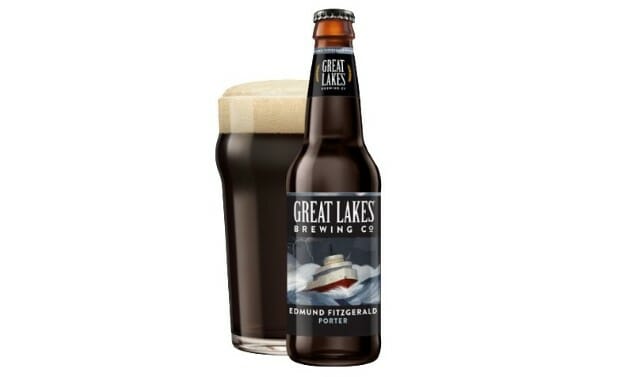
It’s funny how dark ales still scare some drinkers—even those ones who drink black coffee every morning. Certainly, in the early era of American craft beer, styles such as porter and stout were harder sells to drinkers who were just beginning to explore the wider beer segment, but they eventually became expected brewery staples. Today, porter and stout have a tendency to be used as canvases for confectionary flavor experimentation, which can result in beers that are fit only for dessert, but there are still quite a few classic non-adjunct porters left out there. Of those, one of the most well-liked options hails from Cleveland’s Great Lakes, a brewery that is known for its rock-solid execution of classic styles, from pale ale to dortmunder lager. It’s “Ed Fitz,” though, that is likely the brewery’s most beloved year-rounder.
This is a classic American porter—dry and roasty, with a bittersweet dark chocolate note running from front to back and a slightly piney hop presence that, once again, is utterly unlike what most newcomers to beer would think of as “hoppy.” It’s also a very drinkable porter, with a hint of residual sweetness to make it go down easier, making it a beer that cries out for both bar food (chicken wings, burgers) or dessert (vanilla ice cream!) in equal measure.
6. Victory Brewing Co. Prima Pils
Alternatives: Firestone Walker Pivo, Lagunitas PILS, Oskar Blues Mama’s Little Yella Pils, North Coast Scrimshaw
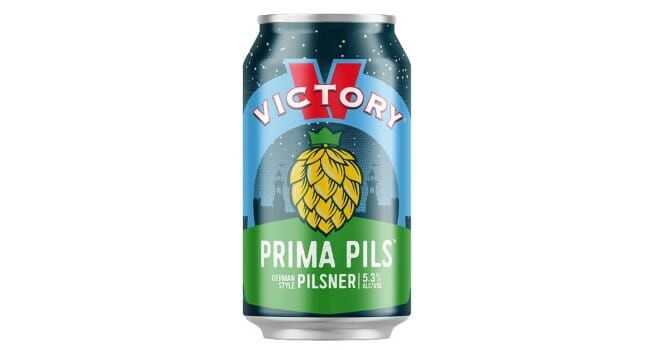
Here’s another thing about hops: If all you’ve ever tasted of them happened in the last few years, it’s entirely possible that your only association with the flavors of hops is citrus, tropical fruit and candy sweetness. Suffice to say, the field of hop flavors and aromatics is MUCH wider than just that—those sweet, fruity flavors just happen to be what’s currently popular within the megalith that is American IPA. If you try a few of the widely-distributed American pilsners, on the other hand, you’re likely to be exposed to an entirely new definition of what “hoppy” could taste like, and you may very well find it to your liking.
Victory’s Prima Pils was an absolutely groundbreaking beer when it came around in 1996, bringing authentic, German-style pilsner to a U.S. craft beer market that still largely associated the word with watery, flavorless macro lagers. Prima Pils, on the other hand, was bringing a totally different flavor profile to play: Floral, herbal and grassy as well as maltier than any American beer labeled “pils,” it let Americans in on a secret that had been known to European vacationers for decades—true pilsner is one of the world’s greatest beer styles. And with the surging popularity of pilsner as a year-round craft staple, the options for excellent craft pils have never been more robust. Get out there, try one and see why so many craft beer geeks are obsessed with lager these days.
7. Von Trapp Brewing Dunkel
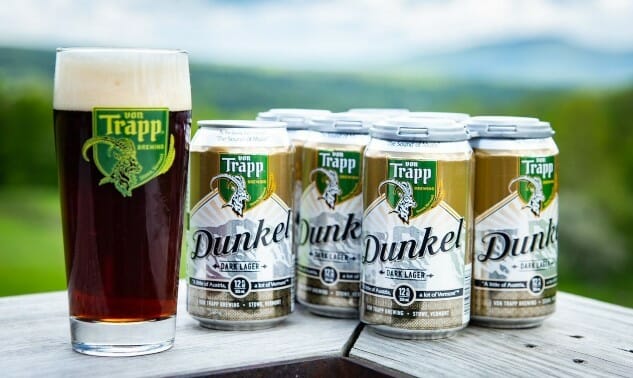
I have to put a bit of a disclaimer here that this selection isn’t nearly as “widely available” as most of the others on the list, but finding widely available German dunkels can be hard. Dark lagers in general (dunkels, schwarzbiers, Czech dark lagers) seem to be having something of a moment now, as evidenced by our recent blind tasting of 68 of them, but they have a tendency to be released as brewpub exclusives or in otherwise small distribution. Therefore, I invite you to interpret this entry as simply “try a dunkel” in general, if you don’t have access to Von Trapp’s Vermont-made beer.
And if you do have access to Von Trapp, consider yourself lucky, as they are one of the stronger specialists in German-style lagers out there today, and are available in at least a handful of states. They make some wonderful pils and helles lagers, so it stands to reason that the toasty, dark bread maltiness of dunkel would also be up their alley. As I wrote in the blind tasting:
They bring their usual subtlety to this one, which blends delicate threads of floral noble hops with dark bread, yeasty notes and that slightly musty quality you expect to get in malty lagers that have made the trip from Germany to the U.S. This one genuinely feels like an “import,” and we mean that as a compliment—Von Trapp is good at capturing the ephemeral differences between German beer made here and German beer made abroad. Mild and inviting, it’s a malty lager that makes its point without screaming from the rooftops.
8. Boulevard Brewing Co. Tank 7 Saison
Alternatives: Brewery Ommegang Hennepin, Allagash Saison, Saison Dupont
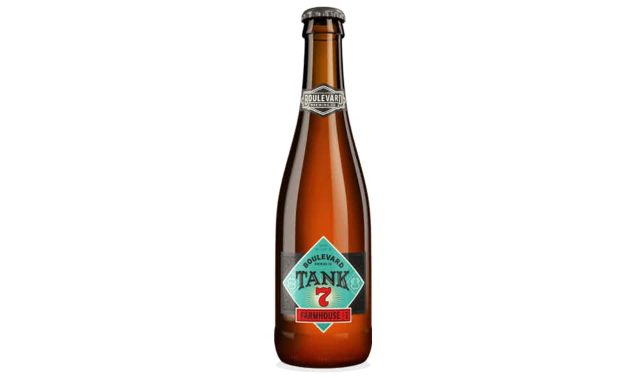
Upstate New York’s Ommegang claims the title of first bringing Belgian-style saison stateside as a beer style, but I’d wager it was Boulevard’s Tank 7 that proved to be the single most influential American beer to help popularize the style among nascent craft beer drinkers. Certainly, most Midwestern beer drinkers had never had anything like it when it first arrived on the scene, demonstrating why the delicately fruity, earthy, estery, spicy Belgian style is among the world’s most beloved.
If you’ve never had saison, they’re a little hard to describe—they’re like the platonic ideal of all Belgian beer styles. Moderate in terms of strength, with profiles that may incorporate a little bit of bready malt flavor, they’re defined by expressive yeast strains that produce flavors that can range from fruity, to spicy, to herbal, to lightly hoppy. Boulevard’s example projects more of a citrus tone—the brewery refers to it as grapefruit, for what it’s worth—with a peppery, spicy finish and well-hidden, potentially sneaky (8.5% ABV) alcohol rounding things out. It’s as equally suitable for a sports bar as it is for Thanksgiving dinner—infinitely adaptable, complex and delicious.
9. Ayinger Celebrator Doppelbock
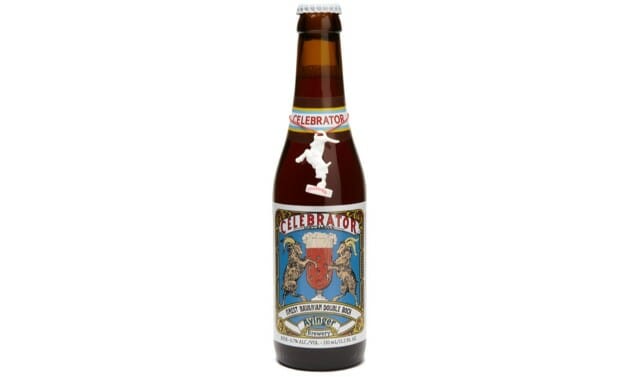
Doppelbock may be a bit of a stretch for those making a first-time leap from bland macro lagers to more flavorful beer, but you never really know what kind of style will give someone their first “aha!” moment. For me, it may well have been a certain imperial stout with coffee and chocolate. And for another person, it might well be doppelbock.
And if we’re talking classic German doppelbock, then of course we’re talking about Ayinger Celebrator. With a name fittingly chosen, it’s likely the world’s best-known version of the strong, dark lager style, packaged in a distinctive bottle that comes with a little plastic goat decal dangling from its neck—I seem to recall collecting a handful of them in the mid-2000s. Malty, slightly boozy, and on the drier side, with notes of dark fruit and slight coffee roastiness, it’s everything you want from a classic doppelbock. This is a substantial, rib-sticking sort of beer, with a flavor profile totally independent from significant hop contributions. If you think of craft beer as universally “hoppy,” it’s the sort of thing you need to try.
10. New Belgium Fat Tire
Alternatives: Bell’s Amber Ale, Troegs Hopback, Sierra Nevada Flipside, Lagunitas Censored
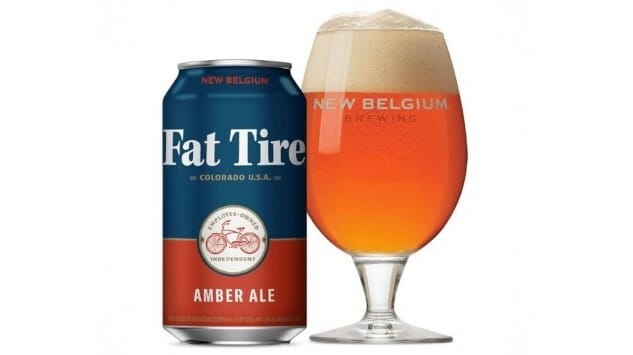
It’s been quite a while since New Belgium’s amber ale flagship was a darling of the craft beer hipsters, and it’s taken its lumps representing a declining style in an era of IPA dominance, but Fat Tire never stopped being a solid American craft beer. Nor did it ever stop being an ideal vessel to get new people interested in more flavorful beer, just as it helped me explore the beer world in the mid-2000s. In fact, Fat Tire still excels at this particular task—it’s an extremely inviting, easy to drink amber ale with just enough character to keep it from becoming boring. And better yet, for those new drinkers who are averse to hops, it maintains a balance point that tips in favor of gentle, malty sweetness. As I wrote during my Flagship February series:
On the palate, flavors are quite mild and smooth. Fat Tire is not a high-volume or loud beer in terms of assertiveness—it’s a very pleasant one that prizes balance, roundness and a lack of rough edges over intensity of flavor. I get toasted bread crusts again, along with a bit of clover honey sweetness, which are met by the slightest hints of floral hops—not enough to denote it as a “pale ale” in my mind’s eye, which is right where an amber ale should theoretically be. It is, as the brewery representative once put it, not assertively sweet and not assertively bitter. It is, in fact, extremely drinkable, or even chuggable. I don’t think it’s at all a stretch to say that it comes off as expertly constructed.
Jim Vorel is a Paste staff writer and resident craft beer geek. You can follow him on Twitter for much more drinks writing.